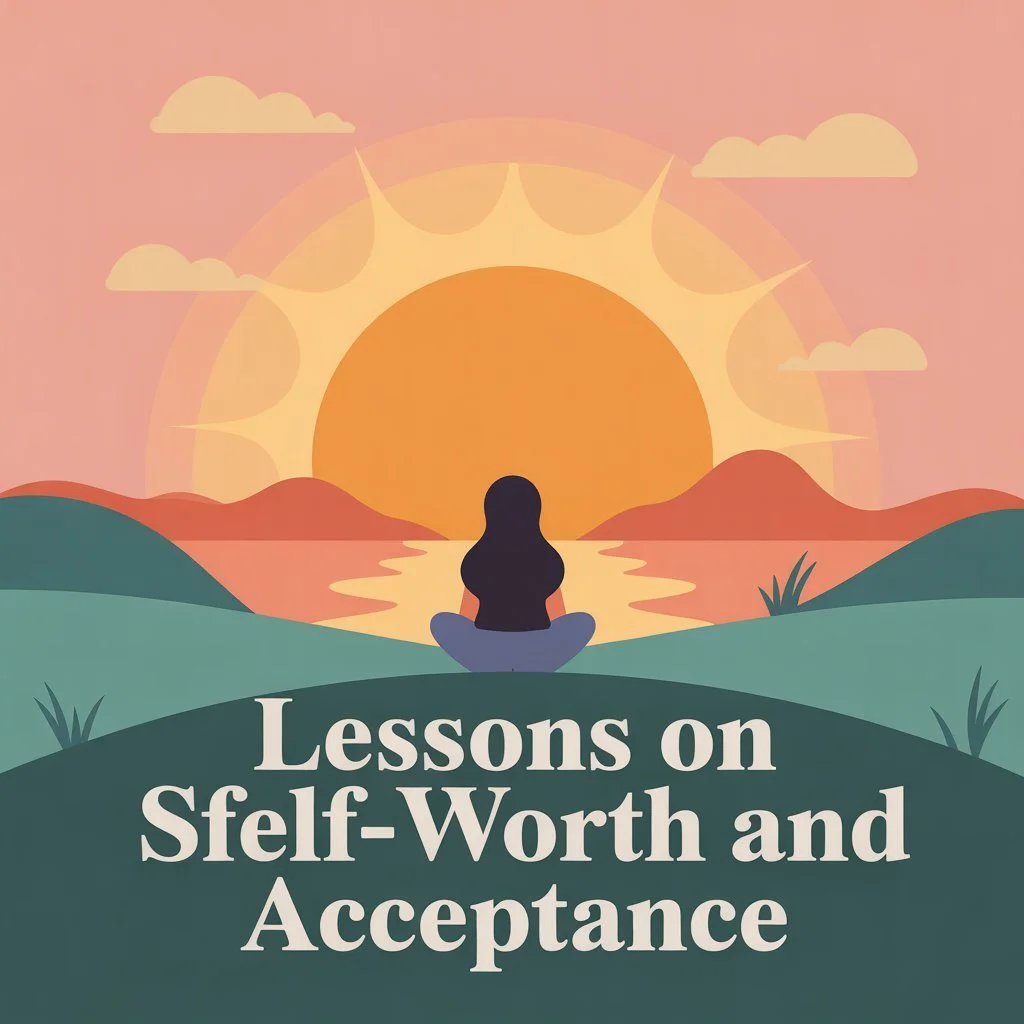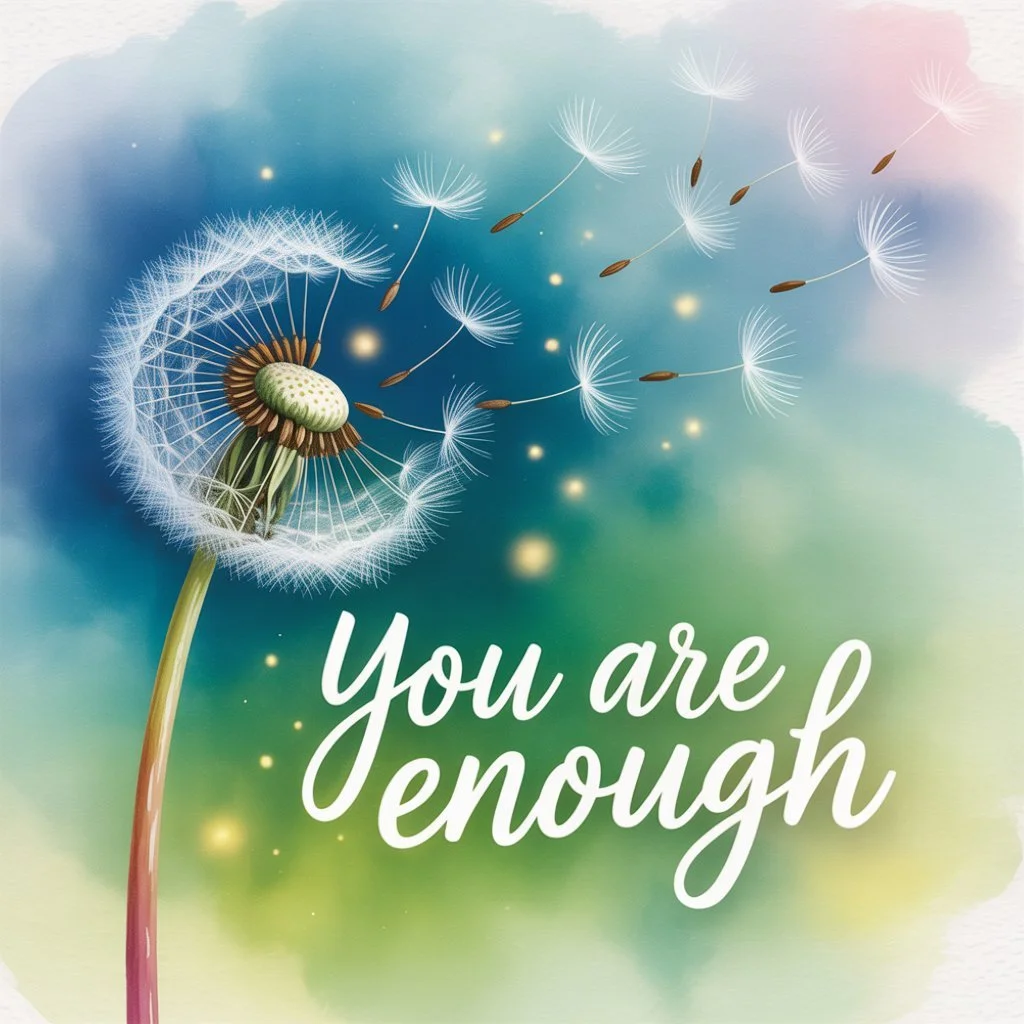Lessons on Self-Worth and Acceptance
Table of Contents
Intro
A Metaphor That Says It All: Pigs Are for Eating, Not for Dating
When Therapy Hurts Instead of Heals
How Low Self-Worth Shapes Relationships
Learning Social Norms Later in Life
Self-Advocacy as the Key to Acceptance
Breaking Free from Labels and Stereotypes
Conclusion
Lessons on Self-Worth and Acceptance
Many of us have been told, directly or indirectly, that our value depends on how we look, act, or fit into society’s mold. Those messages can sink deep, shaping how we see ourselves and how we let others treat us. Over time, they create silent rules about what we should look like, how we should behave, and what makes us “worthy.”
The weight of those expectations can lead to shame, toxic relationships, and years of trying to live up to someone else’s definition of success. But healing begins when we stop measuring ourselves against those standards and start redefining what worth really means.
This post explores powerful lessons on why self-advocacy matters, how stereotypes limit us, and how self-worth grows when we learn to set boundaries and embrace who we are.
A Metaphor That Says It All: Pigs Are for Eating, Not for Dating
Sonia shares a moment from her past that stayed with her for years. During therapy, instead of finding support, she was told that losing weight would solve her problems and even change her life. The phrase that stuck—“pigs are for eating, not for dating”—was delivered as if it were motivation. But for Sonia, it had the opposite effect. It reinforced the shame she already carried and fed a distorted belief that her value depended on her appearance.
At the time, those words cut deeply. They became part of the background noise in her mind, the kind of message that makes you second-guess your worth. Many people who have experienced toxic or misguided advice in therapy or relationships can relate to how lasting and damaging these moments can be.
The shift came later, when Sonia began to reclaim the phrase for herself. Instead of letting it define her, she reframed it as a metaphor for boundaries. To her, it became a reminder that not every judgment or harmful opinion deserves space in her life. Just because someone speaks something over you does not mean you have to accept it as truth.
The lesson here is powerful: words matter. They can wound, but they can also be reshaped into tools for growth. By taking back the words that once hurt her, Sonia showed that healing sometimes begins with reclaiming language and deciding which messages get to stay and which ones do not.
When Therapy Hurts Instead of Heals
Sonia sought therapy in law school during a period of intense stress. She expected a space to process fear, exhaustion, and the pressure to perform. Instead, her sessions with Dr. Grey centered on her appearance. Comments about weight, posture, and how she presented herself began to replace questions about her feelings and needs. The message she heard again and again was that life would improve if she changed how she looked.
This focus left her feeling smaller rather than stronger. Therapy became a mirror that reflected cultural judgment instead of compassion. Rather than exploring grief, anxiety, or identity, she was pushed toward image management. The result was shame, confusion about her true goals, and a growing belief that her worth lived on the surface of her body.
Why is this so harmful? Therapy has power because it is intimate and vulnerable. When that power is used to reinforce appearance standards or stereotypes, the client learns to monitor and correct the self instead of understanding the self. The session becomes a performance, not a place to heal. Over time, this can undermine self-trust, worsen body image, and discourage people from seeking help again.
There are clear signs that therapy is hurting rather than helping.
You leave sessions feeling judged or unsafe.
Your emotions are dismissed or quickly redirected to surface fixes.
The therapist talks more about how you look than how you feel.
Boundaries feel unclear, or the therapist imposes personal values.
Your goals are not discussed or are replaced by goals you did not choose.
By contrast, supportive therapy looks and feels different.
You are met with curiosity, not criticism.
The work focuses on your inner world, your history, and your values.
Goals are set together and reviewed openly.
The therapist practices cultural humility and respects neurodivergence and body diversity.
You leave feeling seen, even when sessions are emotionally challenging.
A key reflection from Sonia’s experience is that therapy can change lives when the relationship is safe and the method fits the person. It can also cause harm when it repeats the very messages that wounded you in the first place. Not every professional has the right tools for every client. Fit matters. Approach matters. Your sense of safety matters.
Self-advocacy includes knowing when to walk away. You are allowed to interview therapists, ask about their approach, and say no to what does not serve your healing. A simple process can help:
Name your goals in writing before or after a first session.
After each session, note how you feel in your body and whether you felt heard.
Ask direct questions in the next session, such as, “How will we work with anxiety and trauma without focusing on weight or appearance” or “What does success look like in this approach for someone like me”
If the fit is not right, end the relationship kindly and clearly.
You can use a short script: “Thank you for your time. I am looking for a different approach that aligns with my goals, so I will not be continuing.” That is enough. You do not owe a defense of your choice.
Sonia’s story is a reminder that the goal of therapy is not compliance with cultural norms. The goal is healing, clarity, and a stronger connection to your own worth. If you have experienced something similar, know that you are not alone and that a better fit exists. For deeper context on how she recognized these patterns and reclaimed her voice, listen to the full podcast episode, and explore her book for practical guidance on self-advocacy and self-acceptance.
How Low Self-Worth Shapes Relationships
Low self-esteem does not only affect how we see ourselves in the mirror. It silently shapes the way we enter and remain in relationships. When you believe deep down that you are not enough, you often accept less than you deserve. That can look like staying in one-sided friendships, tolerating disrespect, or holding onto people who take more than they give. Sonia shares openly that her lack of self-belief drew her toward toxic connections. Because she doubted her own value, she settled for relationships that confirmed her fears rather than challenged them.
In her case, friends who dismissed her feelings or crossed her boundaries were allowed to stay in her life. Instead of questioning their behavior, she questioned herself. Was she asking too much? Was she the problem? These internal doubts became a cycle, keeping her stuck in environments that drained her rather than uplifted her.
This pattern is common for anyone struggling with low self-worth. When the voice inside whispers “you are lucky just to have people around,” it becomes difficult to imagine walking away. Toxicity can start to feel normal. The fear of being alone often outweighs the hope of finding healthier connections.
The turning point for Sonia came when she began to rebuild her sense of self from the inside out. By naming her needs, practicing boundaries, and slowly learning to trust her voice, she saw that relationships should not feel like constant survival. Respect and care are not luxuries, they are the foundation of true connection.
Healing in this area is not just about cutting ties. Ending harmful relationships may be necessary, but the deeper work is learning to believe that you are worth more. Once that belief takes root, the choices you make about who belongs in your life naturally begin to shift. You start seeking spaces where your presence is celebrated, not tolerated. You find friends who listen, partners who respect, and communities that welcome you without conditions.
Learning Social Norms Later in Life
Many people pick up social norms almost naturally as they grow up—things like posture, table manners, or the unspoken rules of how to present yourself in different settings. But what happens when those lessons come later in life rather than early on Sonia shares openly that some of the skills others seemed to absorb effortlessly, she had to work hard to learn as an adult.
Simple things like how to hold utensils, how to sit with confidence, or how to adjust her presence in social spaces often felt foreign to her. While her peers appeared to “just know” these expectations, Sonia had to break them down piece by piece. For years, this created a sense of embarrassment and even isolation. She often felt like she was playing catch-up in a game where everyone else already knew the rules.
What makes her story powerful is not the delay but the reframing. Sonia eventually realized that learning something later in life is not the same as being incapable. It does not diminish intelligence, worth, or potential. It simply reflects a different timeline. Society often pressures people to master milestones at certain ages, but those timelines are arbitrary. True growth does not expire with age.
Her shift in perspective allowed her to move from shame to empowerment. Instead of viewing herself as “behind,” she began to celebrate the fact that she was still learning and improving. Every new skill was proof of resilience and determination, not failure.
Self-Advocacy as the Key to Acceptance
Self-advocacy is the cornerstone of Sonia’s story. At its core, her message is clear: no one can speak up for you better than you can. While support systems, mentors, or loved ones can encourage you, the real breakthrough comes when you learn to claim your own voice and stand firm in your worth.
For much of her life, Sonia wrestled with the weight of external judgments. Therapists, peers, and even cultural messages often told her who she should be, how she should look, or what she should change. At first, she internalized those voices, believing they held the power to define her value. But over time, she realized that waiting for others to hand her acceptance only kept her trapped in cycles of shame and disappointment.
True acceptance, she discovered, does not come from external validation. It begins with self-validation—choosing to recognize your own needs, setting boundaries, and refusing to let harmful labels dictate your identity. This shift did not happen overnight. It took courage, trial and error, and a willingness to face discomfort. Yet each time Sonia stood up for herself, she reclaimed a piece of her confidence.
Her journey illustrates a universal truth: self-advocacy is both the hardest and most rewarding step in healing. It requires confronting fear and pushing past the belief that you are undeserving of better treatment. But it also brings freedom. When you validate yourself first, you no longer live at the mercy of others’ opinions.
Breaking Free from Labels and Stereotypes
Labels have a way of sticking. Autism, weight, appearance—society often reduces people to these categories and assumes it knows their story. Sonia’s experience shows how damaging those assumptions can be. From an early age, she was surrounded by voices that tried to tell her who she was and what she could or could not do. The more those labels were repeated, the more they threatened to confine her.
But Sonia’s journey is proof that labels are not destiny. Instead of letting stereotypes dictate her future, she chose to challenge them. The very traits that others once used against her—her body size, her differences, her diagnosis—became sources of insight and resilience. By reclaiming her story, she turned what was once seen as weakness into evidence of her strength.
This part of her journey highlights something universal: real power comes from lived experience. It is not about fitting into society’s mold but about defining yourself on your own terms. Sonia reminds us that the stereotypes placed on people often reveal more about cultural bias than about the individuals themselves.
The takeaway is simple but powerful. When we listen to real voices instead of assumptions, we begin to dismantle myths. Stories like Sonia’s reshape how we view difference and challenge us to question the narrow boxes we put people in. By breaking free from labels, we not only create space for authentic self-expression but also encourage society to expand its definition of worth and success.
If you want to explore this transformation more deeply, Sonia shares raw stories and hard-won insights in her book. It is not just about her experiences, but about learning how anyone can move beyond the labels and write a new story for themselves.
Conclusion
At the heart of Sonia’s story is a powerful truth: our worth is not dictated by appearance, social status, or how easily we fit into the world’s expectations. True value comes from within, and it is something no one else can measure for us.
Her journey shows that healing begins when we draw boundaries, stop internalizing harmful labels, and start advocating for ourselves. Self-worth does not arrive overnight, but it grows stronger every time we choose to rewrite the old stories that once held us back.
If this message resonates with you, there are two ways to go deeper. First, listen to the full podcast episode to hear Sonia’s raw, unfiltered reflections. Her voice carries a depth that no summary can fully capture. Second, explore her book, where she expands on these lessons with practical tools and hard-earned wisdom for anyone ready to embrace self-acceptance.




